A question I often get asked is: should I visit Kyoto or Osaka on my trip to Japan? And honestly, it’s a tough one to answer. Both cities have a special place in my heart that captivate with their unique charm, yet they offer incredibly different experiences.
Kyoto is a traditional Japanese city, a living postcard, with timeless temples and tranquil gardens that transport you back to the Japan of centuries ago. Osaka, on the other hand, is a modern city with neon lights, incredible street food, and a vibe that’s a world away from Kyoto’s peaceful pathways.
In this article, I’m going to share with you my personal experiences of these two fantastic cities, from wandering around Kyoto’s Gion district, hoping to spot a Geisha, to eating my way through Osaka’s Dotonbori street food stalls. If you’ve ever found yourself wondering whether to choose Kyoto’s traditional charm or Osaka’s energetic hustle, this post is for you.
Table of Contents
- Kyoto vs Osaka: Which one to visit?
- Differences between Kyoto vs Osaka
- Why pick Kyoto
- What are the downsides?
- Why pick Osaka
- What are the downsides?
- Kyoto or Osaka for food
- Kyoto or Osaka for nightlife
- Kyoto or Osaka for accommodation
- Kyoto or Osaka for daytrips
- Kyoto or Osaka for tourist attractions
- Which one is more expensive?
- My conclusion
- Frequently Asked Questions
Kyoto vs Osaka: Which one to visit?
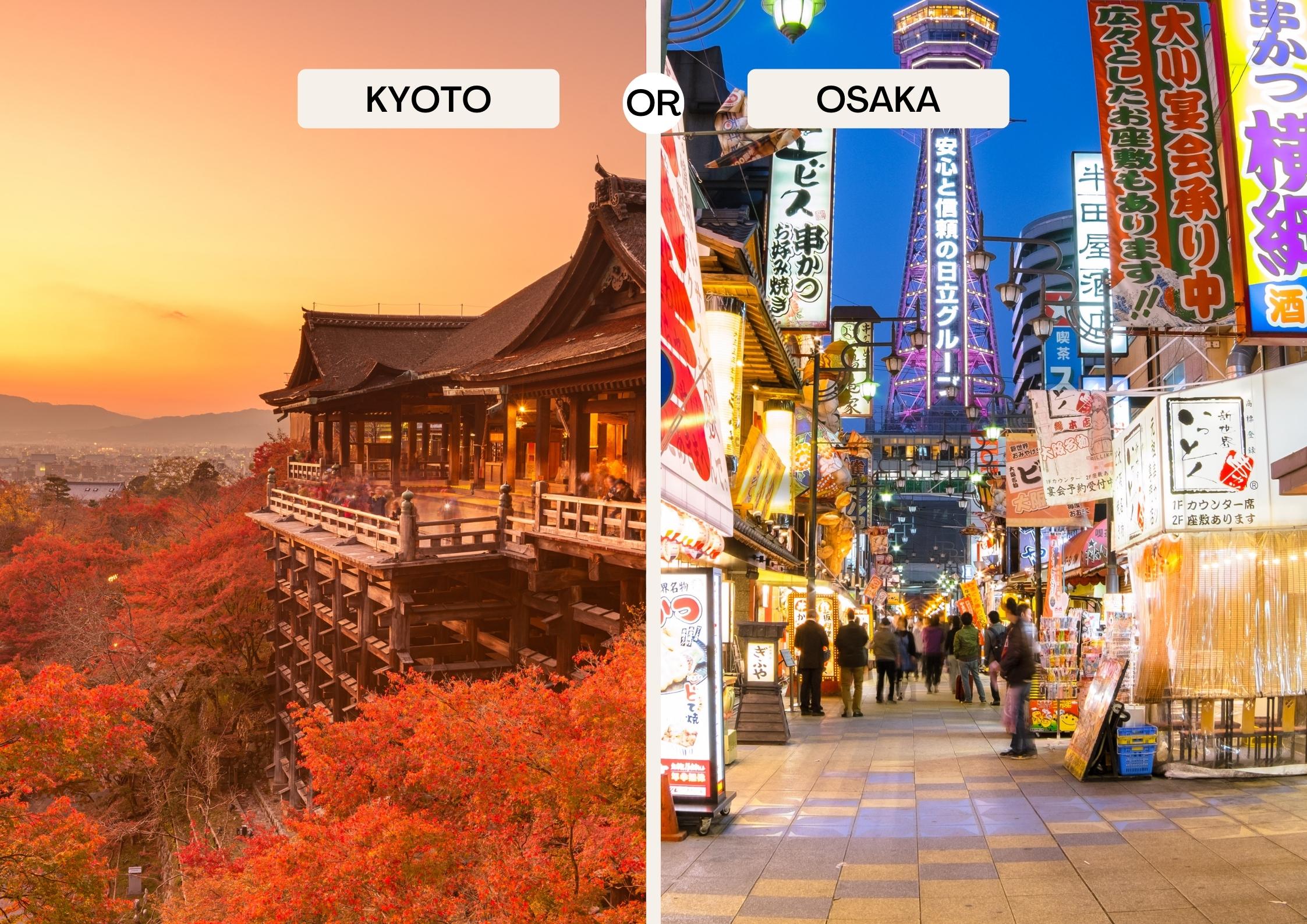
Choosing between Kyoto and Osaka for your next adventure in Japan can be a challenging task. Both cities are remarkable in their own right, featuring a ton of unique Japanese experiences. So, which one should you visit?
If you’re drawn to history and want to appreciate the beauty of traditional Japan, Kyoto is waiting for you. With its beautifully preserved temples, ancient shrines, and tranquil gardens, it’s like stepping back in time. You’ll be walking through the scenic Arashiyama Bamboo Grove, feeling the crunch of gravel underfoot in a Zen rock garden, or catching a glimpse of a geisha flitting through the historic Gion district.
On the other hand, if you’re energized by a modern city and your idea of discovery involves lots of street food and shopping adventures, then Osaka is the place for you. You’ll be navigating through the neon-lit streets of Dotonbori, trying takoyaki or okonomiyaki from a street-side vendor, or soaking in the view from the top of the Umeda Sky Building.
Kyoto is traditional in the best of ways, with many places to visit and well preserved touristic attractions. But it’s also expensive and can be very busy at times. Osaka is more modern, a lot cheaper than Kyoto, but it lacks the vast number of attractions which Kyoto has. If your budget allows it, stay in Kyoto and enjoy all its riches and take a day trip to Osaka to experience some of its night vibe and street food.
Differences between Kyoto vs Osaka
If I were to describe the true differences between Kyoto and Osaka I would tell you the famous Japanese proverb: Kyoto no Kidaore, Osaka no Kuidaore (京都 の 着 倒 れ 、 大阪 の 食 い 倒 れ).
This roughly translates to “Dress into bankruptcy in Kyoto, eat into bankruptcy in Osaka”. Kyoto no Kidaore refers to the city’s tradition of fine and expensive kimonos, a symbol of its rich history and culture. Kyoto was once the capital of Japan, home to the imperial court and aristocracy, who had a significant influence on its culture, aesthetics, and traditions. Today, you can find exquisite kimonos and traditional crafts in various shops in Kyoto, though they can be quite pricey.
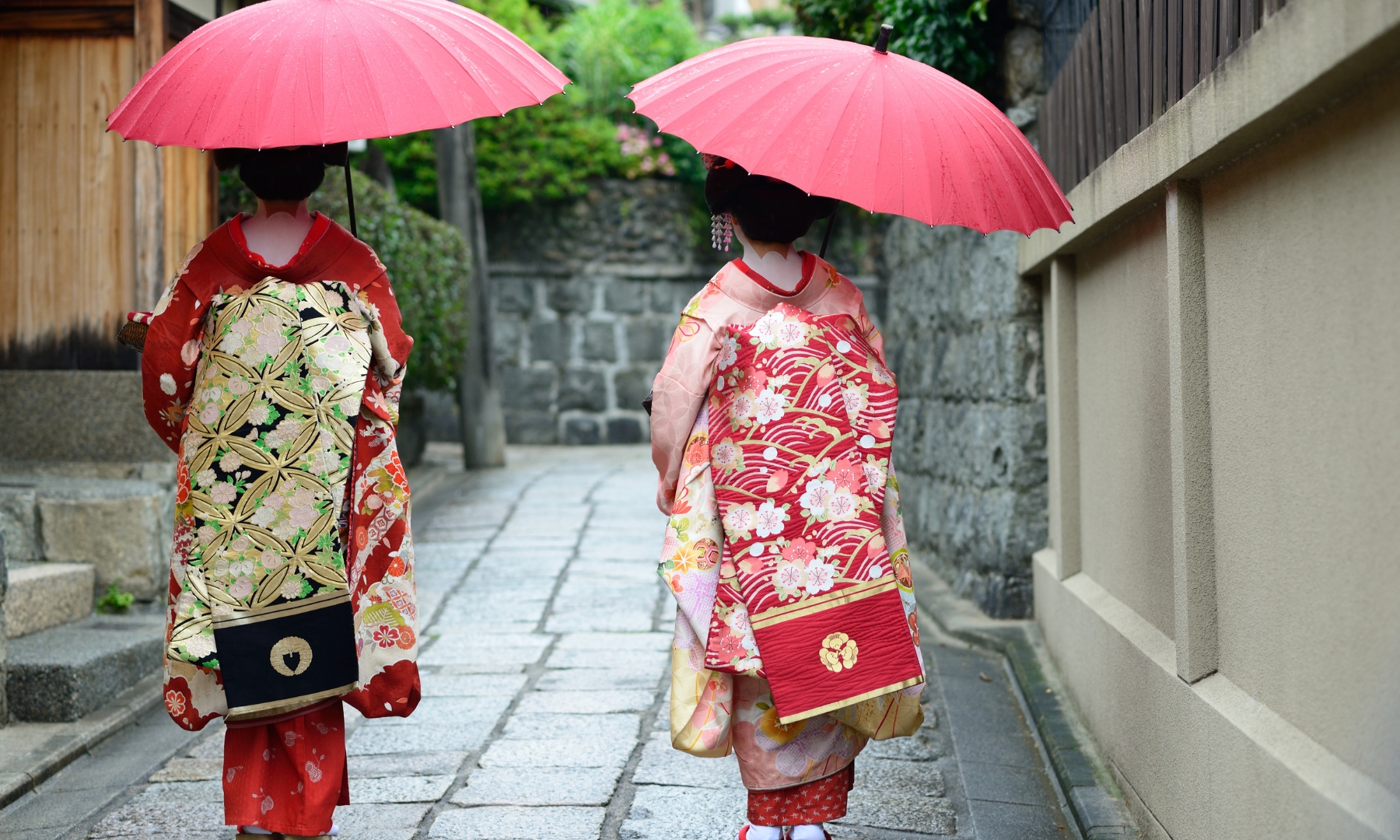
Osaka no Kuidaore, on the other hand, points to the city’s reputation as a food paradise. Osaka is often referred to as the nation’s kitchen due to its diverse food culture. The term kuidaore means to ruin oneself by extravagance in food, reflecting the Osakan tradition of enjoying good food until one’s money runs out. This literally means that food is an integral part of Osaka’s identity.
The saying beautifully explains the contrasting characteristics and cultural highlights of these two cities – the elegance and refined aesthetics of Kyoto and the vibrant food culture of Osaka. And this continues to be the case nowadays.
Kyoto has the whole traditional Japanese aesthetics going for it. Stunning temples which will take your breath away. Superb gardens that are so meticulously cared for, they look straight out of a perfect postcard. Kyoto has winding streets lined with machiyas (traditional wooden townhouses) and restaurants where the staff wears kimono and kaiseki is served in tatami rooms. You can see that Kyoto continues to be all about class and sophistication. And that’s precisely why Kyoto is expensive. Although Kyoto does offer delightful street food, part of its charm lies in the indulgence in luxurious fashion and gourmet dining.
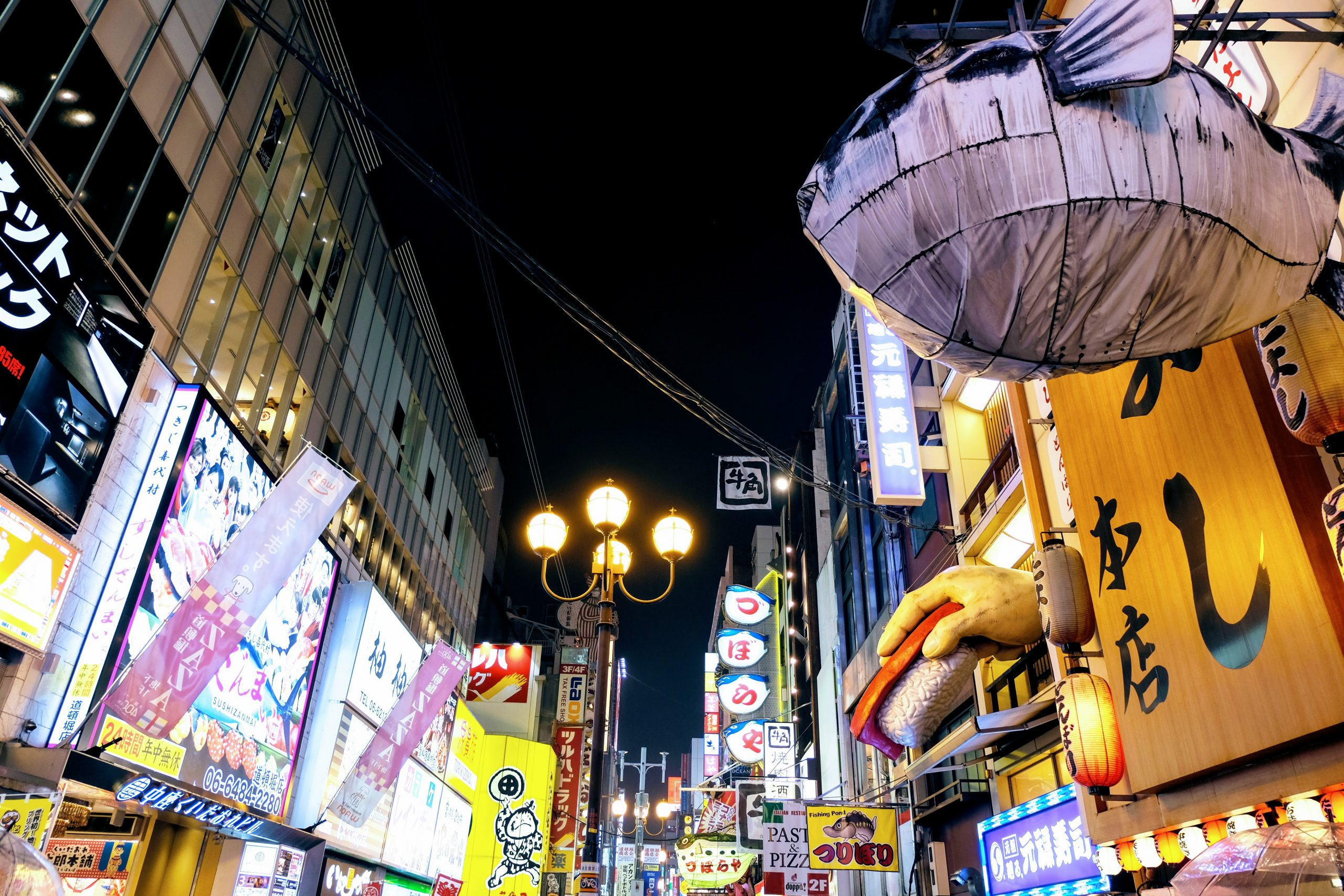
Osaka, on the other hand, is like a mini Tokyo. It has vibrant streets, a fast-paced city environment and plenty of cool districts with food, shopping and modern entertainment. Osaka has a high-energy urban atmosphere, and contemporary architecture. The joy of being in Osaka is celebrating its exceptional street food culture. You’ll be surprised by the quality of the street food too, often passed down through generations. Accessibility is another perk, with street food stalls, or yatai, dotting busy areas like Dotonbori and Shinsekai, allowing you to sample various dishes while immersing yourself in the city’s rhythm.
Why pick Kyoto
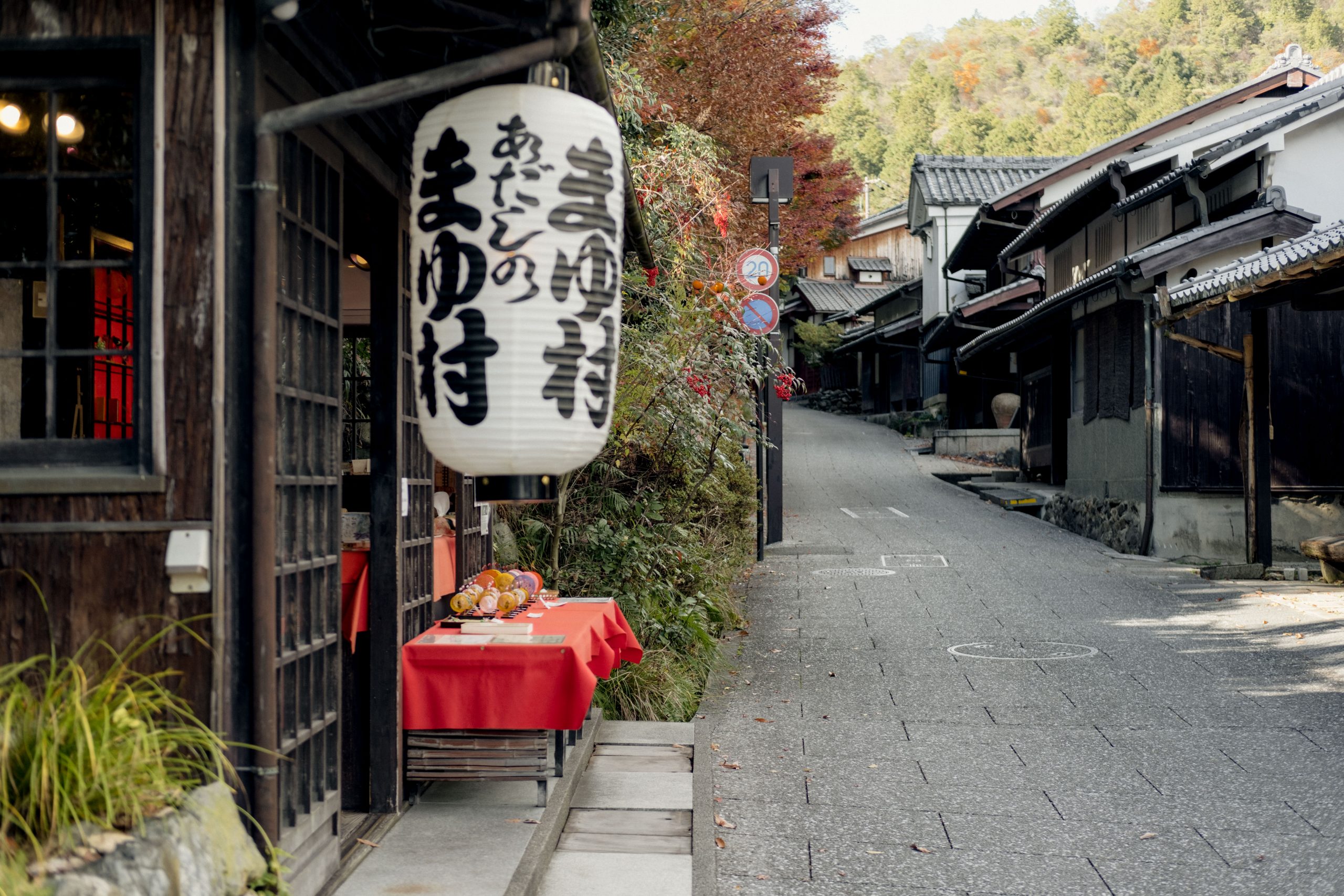
Foremost, Kyoto is home to over a thousand temples, each one showcasing the depth of Japanese architecture and spirituality. Places like Fushimi Inari, with its iconic red torii gates, or Kinkaku-ji with its golden exterior, are sights you don’t want to miss. Then there are the serene gardens, with moss, gravel and manicured trees.
Kyoto is also the heart of the geisha world, particularly in the historic district of Gion, where you might catch sight of these traditional entertainers. Arashiyama, with its famous bamboo grove and scenic beauty, adds another layer to Kyoto’s charm. And let’s not forget the Machiyas – Kyoto’s traditional wooden town houses, which continue to serve as accommodation, restaurants, or cafés.
Food lovers will appreciate Kyoto’s culinary scene, particularly the Kaiseki cuisine – a multi-course dining experience that’s as much about presentation as it is about flavours.
What are the downsides?
Kyoto is, in my opinion, one of the most beautiful cities in the whole of Japan but it’s also one of the most expensive. Accommodation is expensive, especially if you wish to stay in a traditional ryokan. Restaurants in general are pricier than even in Tokyo and Kyoto tends to focus on traditional entertainment like geisha spotting, kaiseki, pottery and tea ceremony.
Kyoto has a surface of 827.9 square kilometres (319.7 sq mi) and is home to 1.5 million residents. However, it welcomes over 85 million tourists on an annual basis, which means that accommodation books up very fast and the city can feel extremely crowded at times.
Why pick Osaka
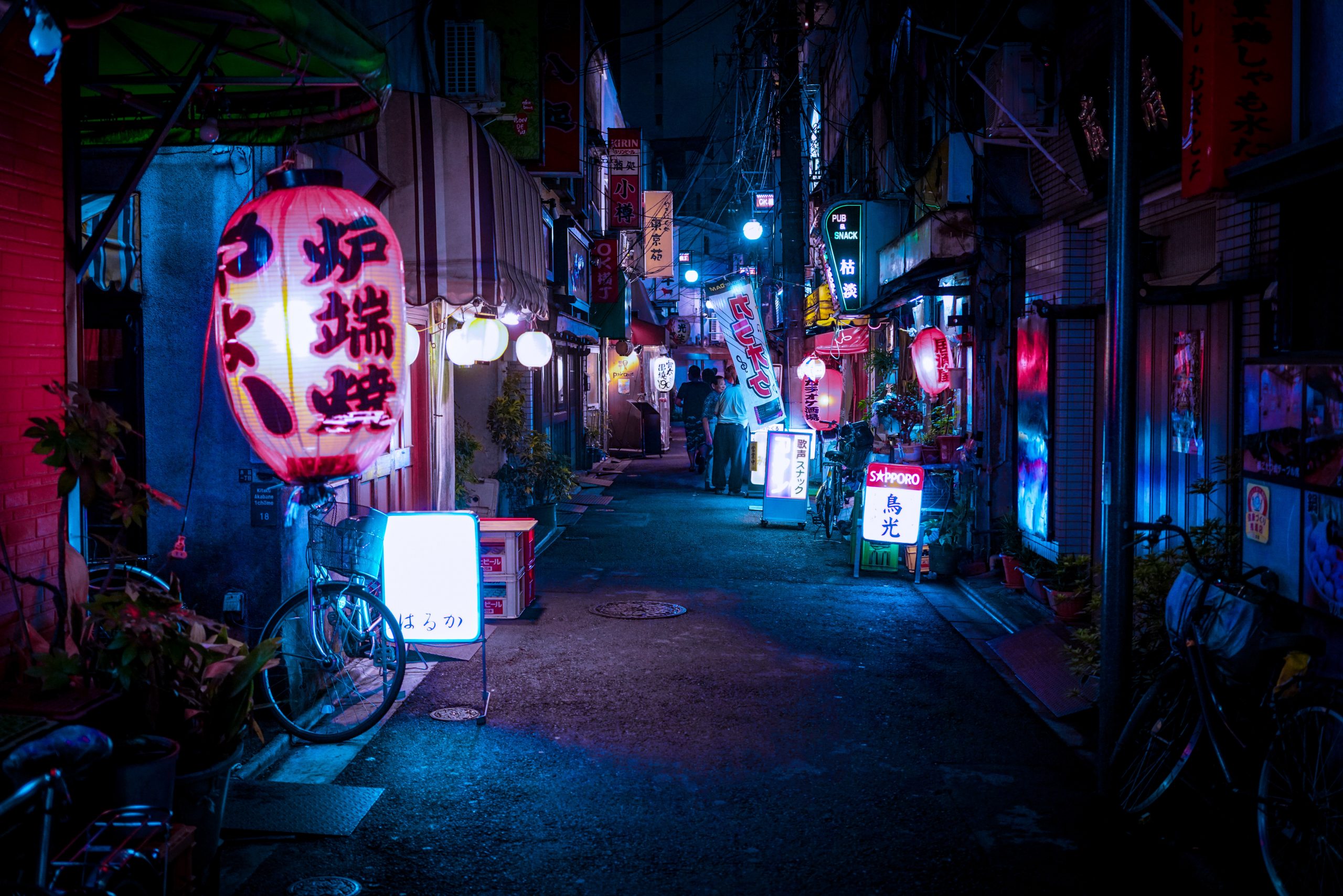
If you’re a food enthusiast, you’ll be in heaven here. Osaka is known as the Japan’s kitchen, and for good reason. The city offers an incredible array of mouth-watering dishes like takoyaki (octopus balls), okonomiyaki (savoury pancakes), and kushikatsu (deep-fried skewers).
Beyond the food, Osaka also has a lighter, busier vibe compared to the more serene Kyoto. It’s an energetic city that never seems to sleep, packed with shopping districts, vibrant nightlife, and friendly locals (even more so than in Tokyo!). Plus, it’s a lot easier on the wallet. Accommodation, dining, and entertainment options tend to be more affordable in Osaka, making it a great choice for budget-conscious travellers.
And here’s the best part – even if you choose Osaka as your base, Kyoto is just a short 30-minute Shinkansen (bullet train) ride away. This means you can easily make day trips to Kyoto to get your fix of temples, shrines, and traditional culture, then return to the bustling excitement of Osaka by evening.
What are the downsides?
While Osaka is a delight for its culinary scene and entertainment, it might not satisfy those in search of numerous tourist attractions. In my opinion, a stay of 2-3 nights is usually ample to cover the city’s main highlights before it begins to feel repetitive. The cost of accommodation in Osaka is less than in Kyoto, but the accommodations tend to be more akin to what you’d find in Tokyo. You’ll mostly see modern buildings here, with traditional houses or machiyas being a rarity.
Kyoto or Osaka for food
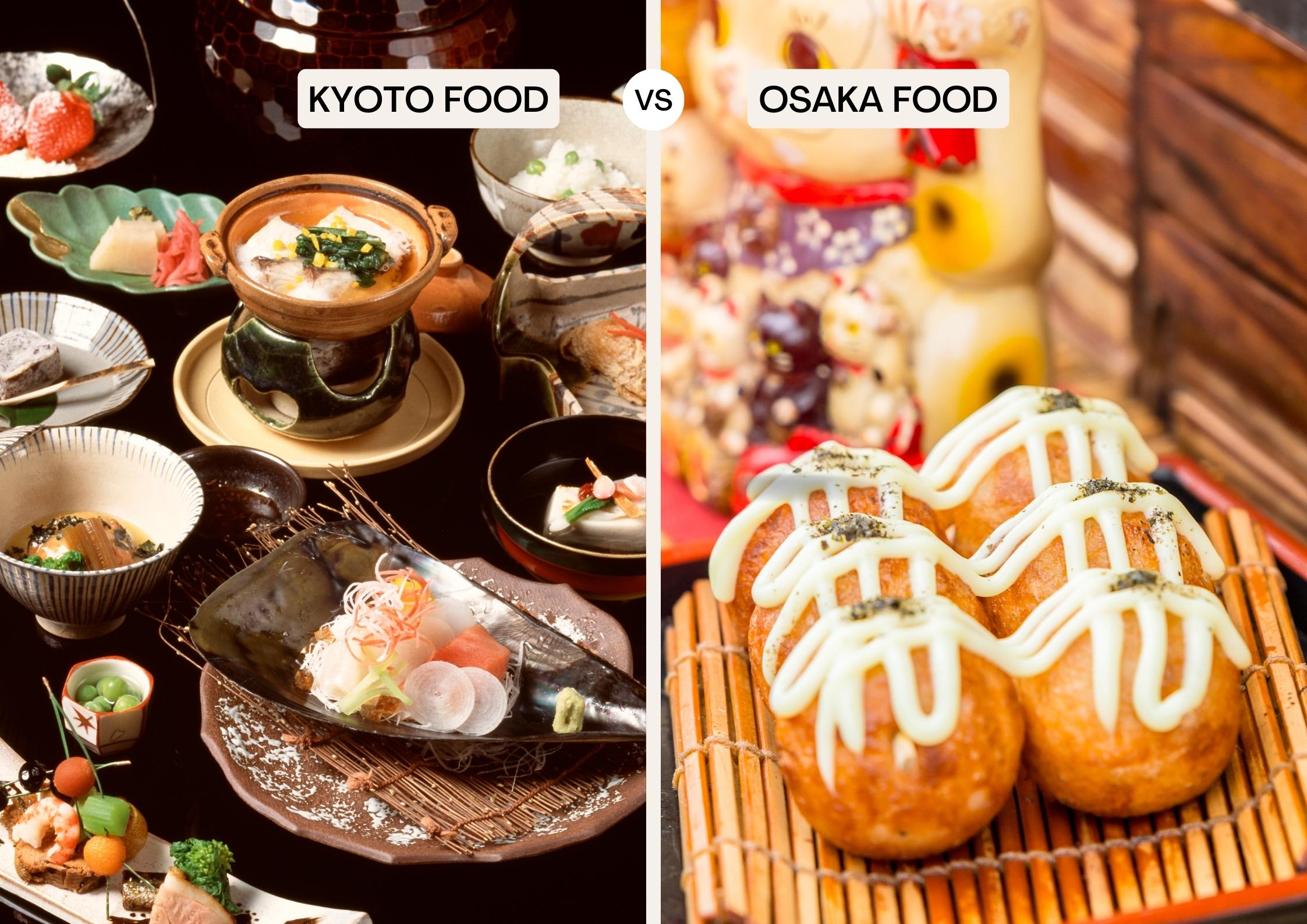
In Kyoto, food is an art form. Kaiseki, the traditional multi-course dinner, takes centre stage, offering a carefully curated, seasonal menu designed to satisfy all the senses. Many Kyoto restaurants feature tatami floors, and some located near temples specialize in tofu dishes, giving you an authentic, sophisticated dining experience. The city, while renowned for its high-end cuisine, also embraces street food.
You’ll find bustling food streets or markets like Shijo Dori and Nishiki Market, brimming with delicious options. And, of course, like any Japanese city, Kyoto has its fair share of konbini (convenience stores), vending machines, and small ramen or tonkatsu joints for budget-friendly meals. However, what truly sets Kyoto apart is the presence of traditional restaurants where staff, clad in silky kimonos, serve exquisite dishes with grace and professionalism.
In contrast, Osaka offers a more laid-back food scene, where the focus is on the pleasure of feasting on a wide variety of dishes. It’s all about street food, and the city truly shines in this respect. Although there’s no shortage of restaurants, including some high-end ones, the vibe in Osaka leans more towards casual and hearty rather than formal and refined.
From a personal perspective, I lean towards Kyoto’s food scene, appreciating the mix of traditional eateries offering multi-course dinners and the vibrant street food options. Having a choice is a luxury in itself. However, it’s worth pointing out that Osaka’s food scene, with its affordability and variety, could be a more appealing option for budget-conscious travellers.
Kyoto or Osaka for nightlife
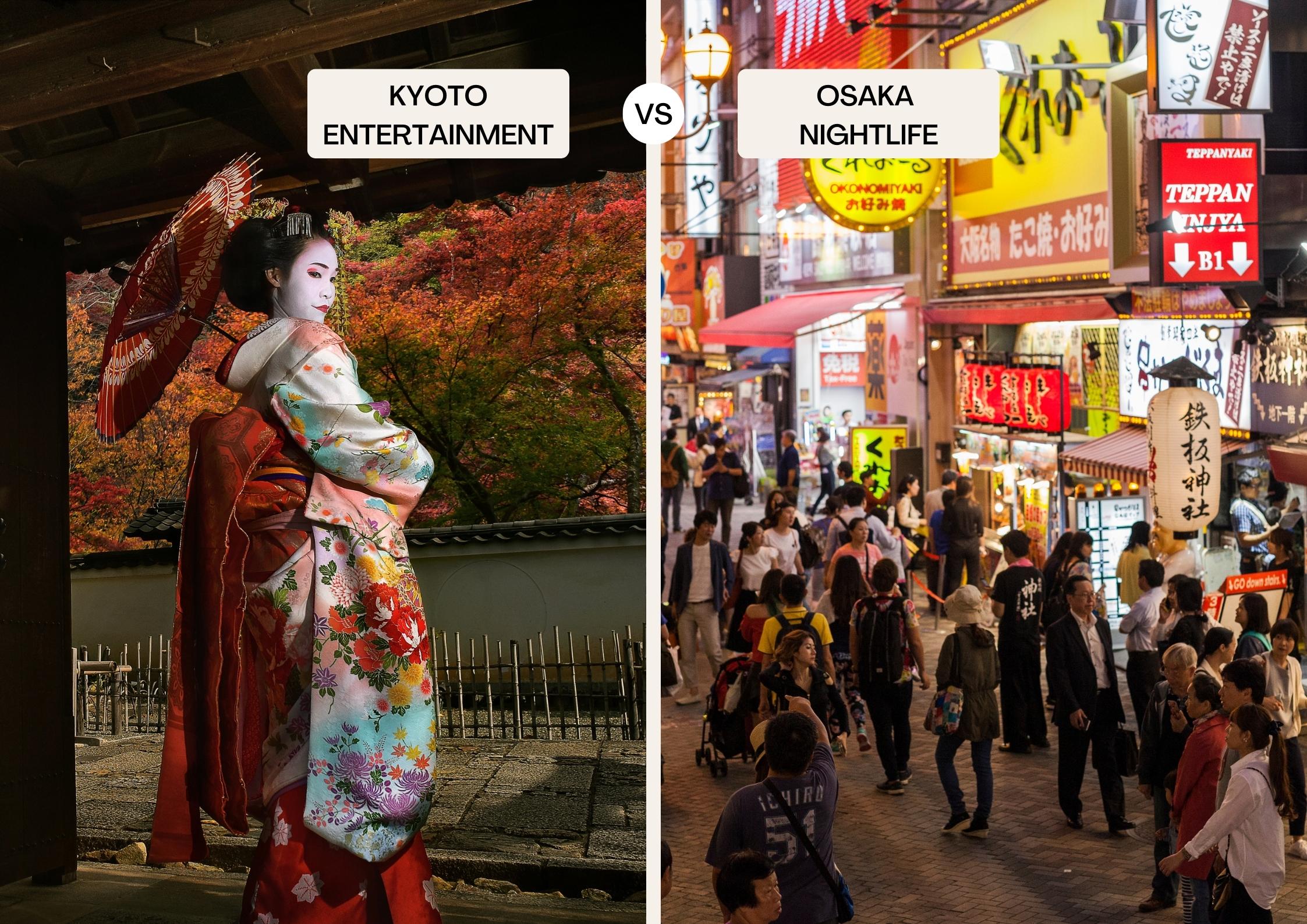
Kyoto’s nightlife is more focused on culture and history. It’s all about traditional entertainment here, whether it’s a trip to a theatre to catch a Kabuki performance, engaging in cultural activities, or even witnessing an enchanting Geisha performance. That being said, Kyoto isn’t just about tradition. Like any other Japanese city, Kyoto has areas dedicated to more contemporary, adult-focused entertainment, although these tend to carry a higher price tag in line with the city’s reputation for entertainment. Bars and nightclubs are plentiful, though they generally cater more to a local audience than to international visitors.
Osaka, on the other hand, is far more relaxed when it comes to nighttime entertainment. The city is full of bars and nightclubs, offering ample options for those looking to unwind after dark. Hozenji Yokocho, a narrow alleyway, is home to around 60 bars, izakayas, and restaurants, making it a popular spot for both locals and tourists. Dotonbori, with its neon lights and vibrant atmosphere, is considered one of the best places for a night out in Osaka. The city also boasts a multitude of karaoke bars, a staple of Japanese entertainment, where you can sing the night away.
Osaka’s nightlife is casual and energetic, offering a stark contrast to the traditional, refined nature of Kyoto’s evening offerings. On this occasion, Osaka wins.
Kyoto or Osaka for accommodation
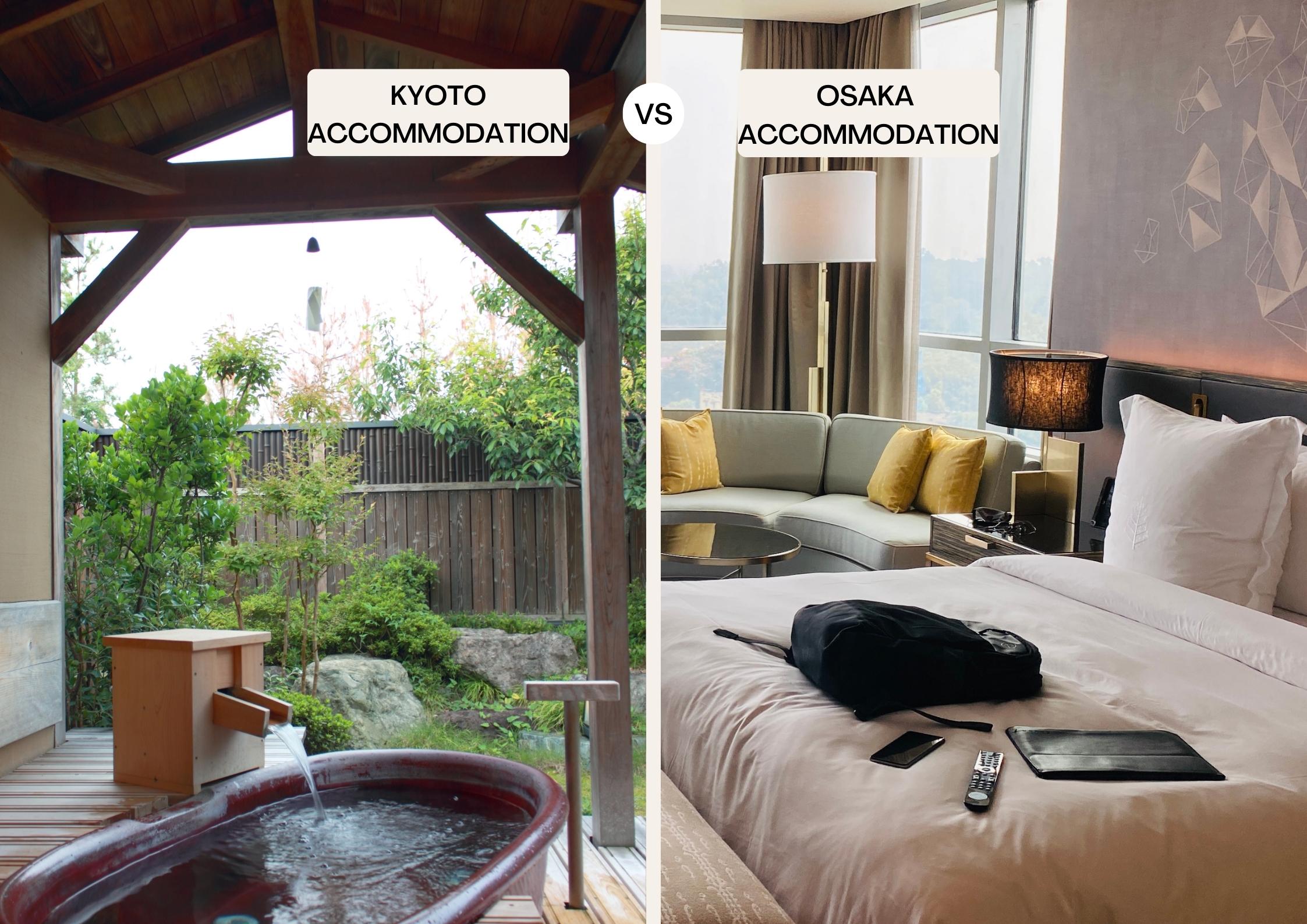
When it comes to accommodation, Kyoto and Osaka offer distinctly different experiences. Kyoto, known for its elegance and traditional charm, has a range of options from budget hotels to extravagant ryokans – traditional Japanese inns. You can also opt to stay in a machiya, a typical wooden townhouse, some of which come with private outdoor onsen (hot springs). These lodgings are usually adorned with stunning decorations and traditional interior gardens, providing a unique cultural experience. Don’t be surprised if some hotels have their own interior or zen gardens. They really are marvellous.
Osaka, by contrast, is a more economical choice for accommodation, though its offerings are more straightforward and modern. Much like Tokyo, Osaka’s accommodations range from budget to luxury hotels, primarily featuring contemporary designs. Traditional elements like interior gardens or ryokans are less common in Osaka. For the most part, you can expect just standard hotel rooms.
For those willing to stretch their budget, Kyoto offers a truly unique accommodation experience, with traditional Japanese aesthetics. However, Osaka presents a more practical and affordable alternative, especially for those prioritizing modern amenities and accessibility.
Kyoto or Osaka for daytrips
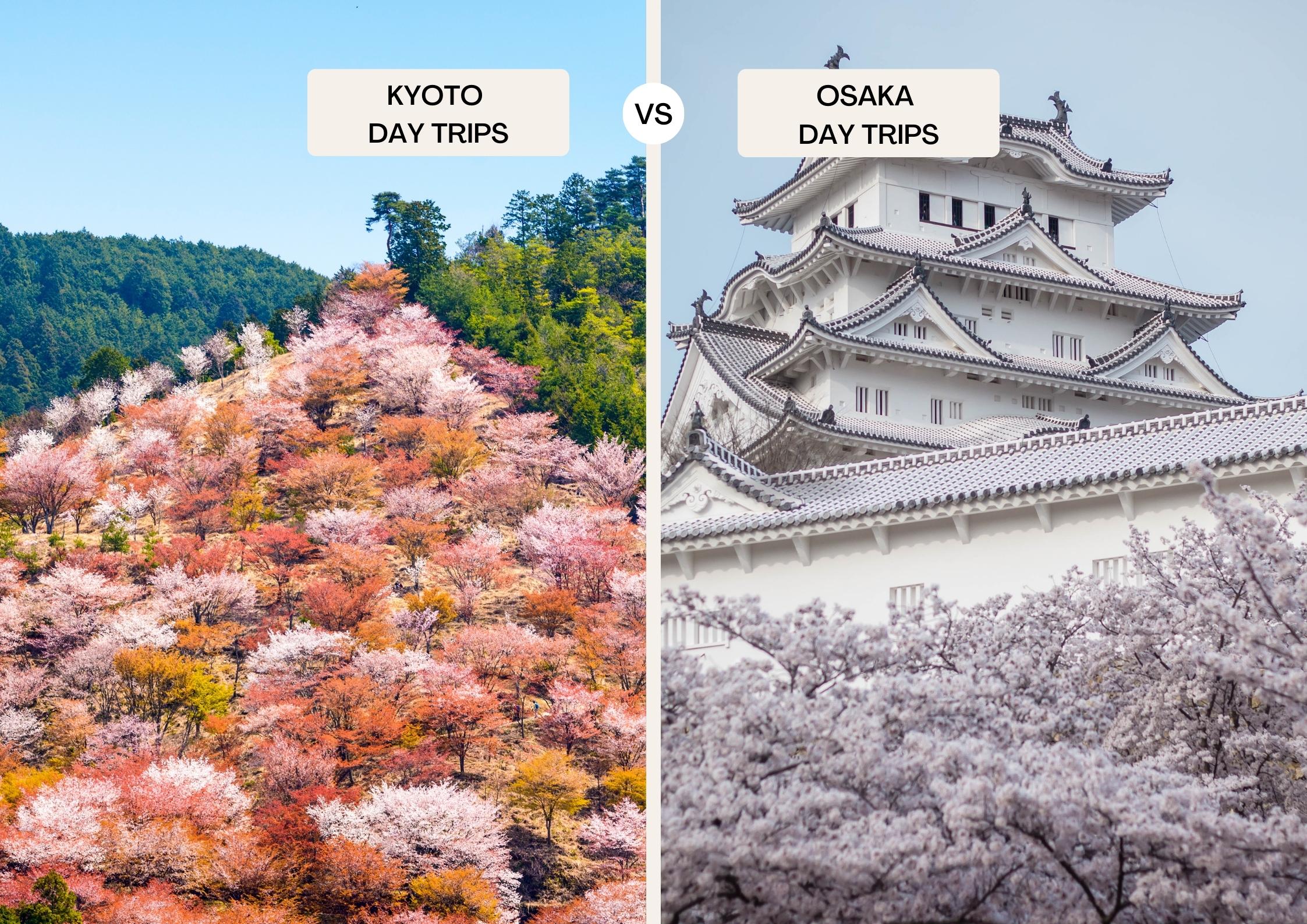
Kyoto and Osaka are both conveniently located and well-connected, making them excellent bases for a variety of day trips. Just a quick 30-minute train ride separates the two cities, offering easy access to each other’s unique attractions. From either city, you can easily visit destinations like Hiroshima, with its poignant Peace Memorial Park; Himeji Castle, one of Japan’s most magnificent castles; Nara, known for its giant Buddha and free-roaming deer; Uji, the green tea capital; and Kobe, famous for its namesake beef.
However, if you’re drawn to the allure of the mountains, Kyoto has a slight advantage. Nearby, you’ll find Mount Koya, one of Japan’s most significant religious sites and a UNESCO World Heritage Site, as well as Mount Hiei, the home of Enryaku-ji Temple and the birthplace of Tendai Buddhism. These mountainous areas are more easily accessed from Kyoto than from Osaka, making Kyoto a more appealing choice if nature and hiking are on your agenda.
Kyoto or Osaka for tourist attractions
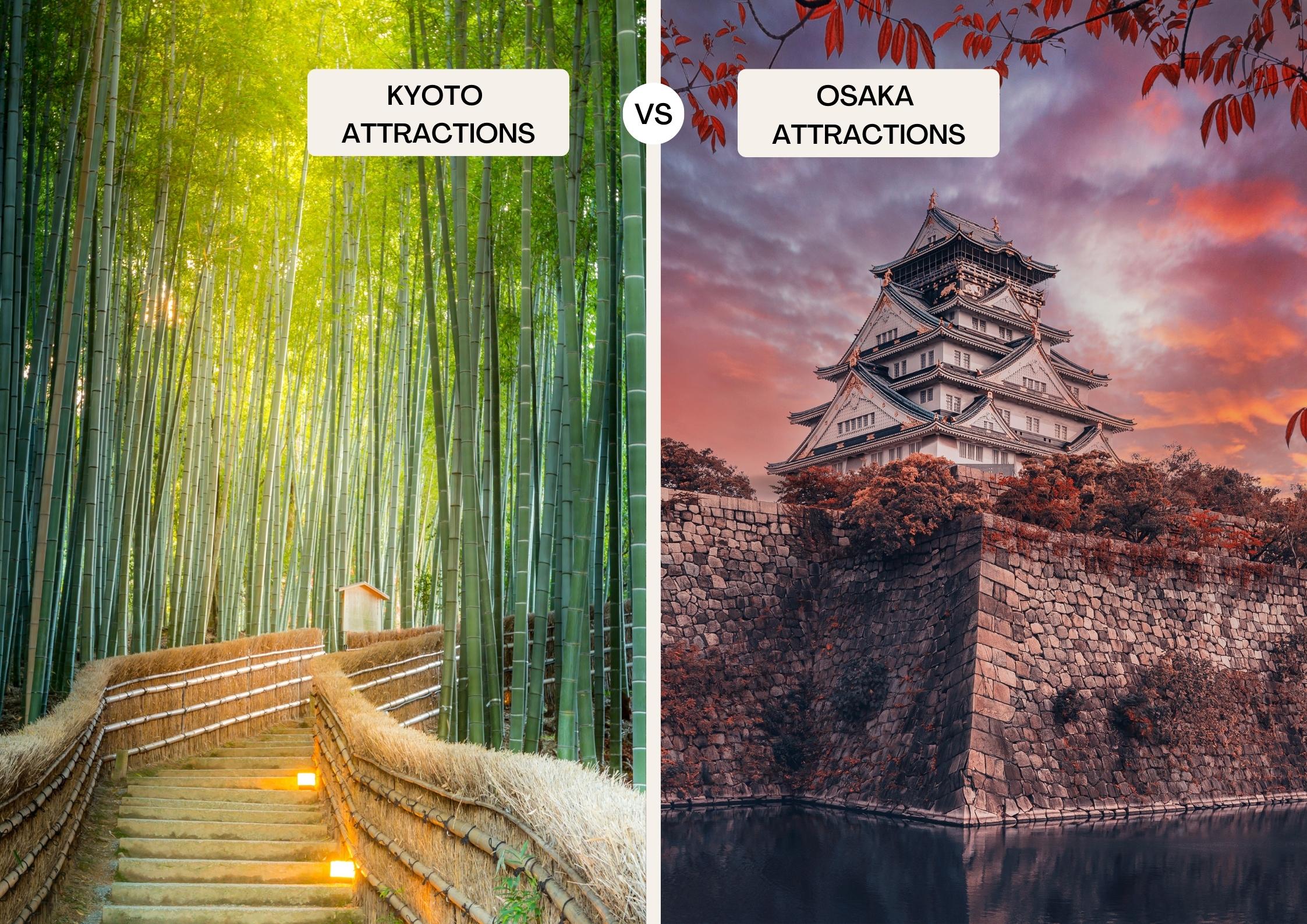
In terms of tourist attractions, Kyoto tends to outshine Osaka with its wealth of historical and cultural sites. This is the city of the famed Arashiyama Bamboo Forest, the Fushimi Inari Shrine with its iconic torii gate path, and countless temples, including the renowned Golden Pavilion and Silver Pavilion. You’ll also find Nijo Castle, a UNESCO World Heritage Site, and the bustling Nishiki Market known as “Kyoto’s Kitchen”. There’s also the Kyoto Botanic Garden and the even the Kyoto train station that’s an attraction in its own right. Gion, in Higashiyama, offers a delightful journey back in time with its traditional wooden machiya houses, teahouses, and glimpses of geishas. Kyoto also offers an excess of cultural activities, allowing you to dress in a kimono, partake in a tea ceremony, learn pottery, or even try traditional sports like Kyūdō.
Osaka, while not as rich in historical attractions, has its own charm as a lively, modern city. Highlights include the imposing Osaka Castle, the vibrant Osaka Bay area, and foodie havens like Dotonbori. Amerikamura is a shopping paradise, while the Umeda Sky Building offers fantastic views of the city. Not to forget, film enthusiasts will love Universal Studios Japan, located in Osaka.
If your itinerary leans towards cultural and historical sites, Kyoto has a lot more to offer. For those who enjoy city life, street food, shopping, and modern attractions, Osaka holds its own appeal.
Which one is more expensive?
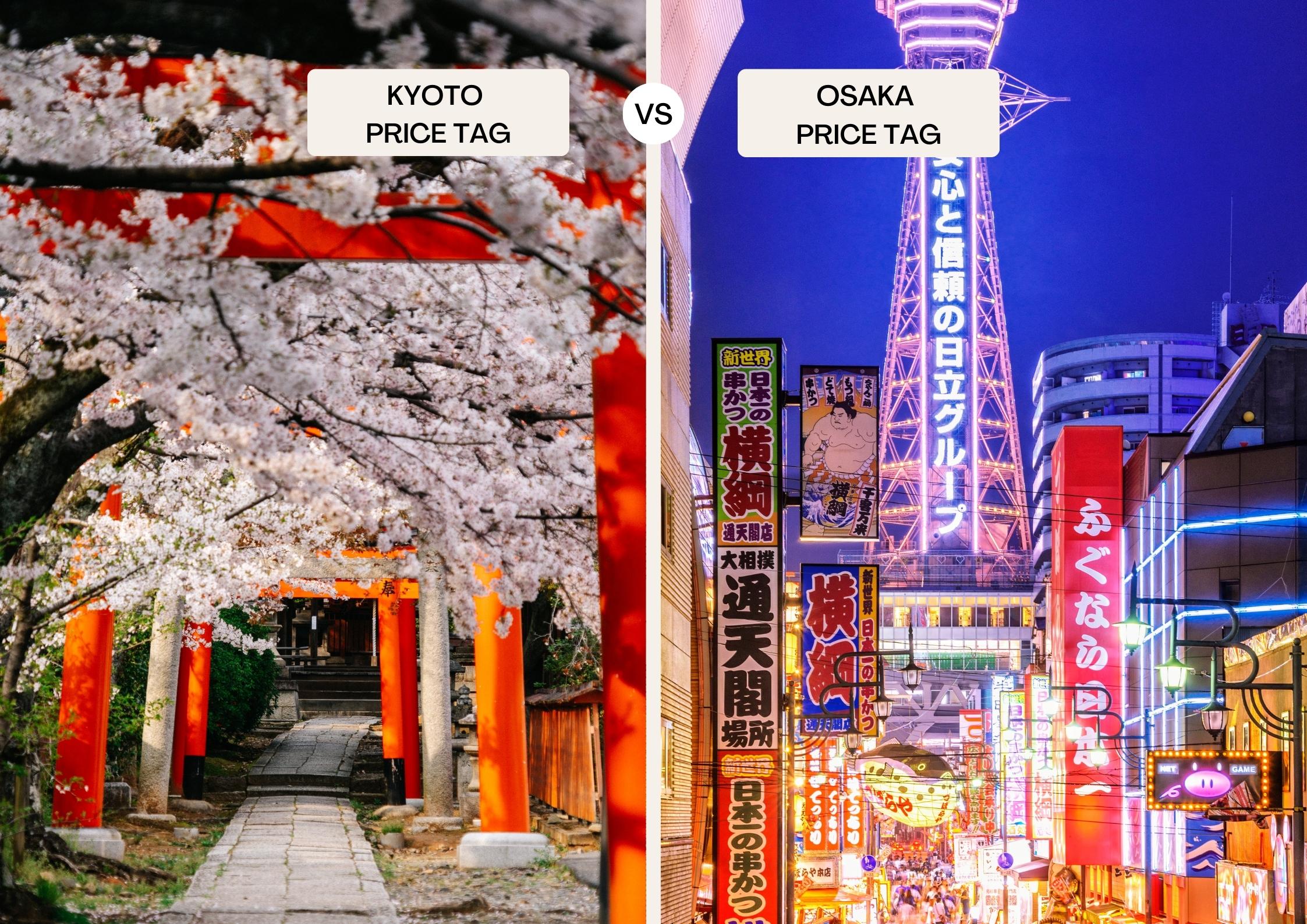
When comparing costs, Kyoto is typically the pricier option between the two cities. This is particularly noticeable in aspects such as accommodations, tourist attractions, and dining, where Kyoto’s reputation for sophistication and traditional elegance comes with a higher price tag. That said, this doesn’t mean that Kyoto is inaccessible for budget-conscious travellers. There are indeed budget-friendly options available – affordable hotels, meals from local konbini (convenience stores), and a variety of free or low-cost activities that allow you to enjoy the city without straining your wallet.
Osaka, on the other hand, generally offers more affordable options in terms of lodging, food, and attractions. This makes it a winner for those looking to keep their costs down, with the exception of a visit to Universal Studios Japan. This popular attraction can significantly add to your expenses when you consider entrance fees, meals, and optional extras like skip-the-line passes. So, while Osaka is typically cheaper, it’s always good to factor in your intended activities when budgeting for your trip.
My conclusion
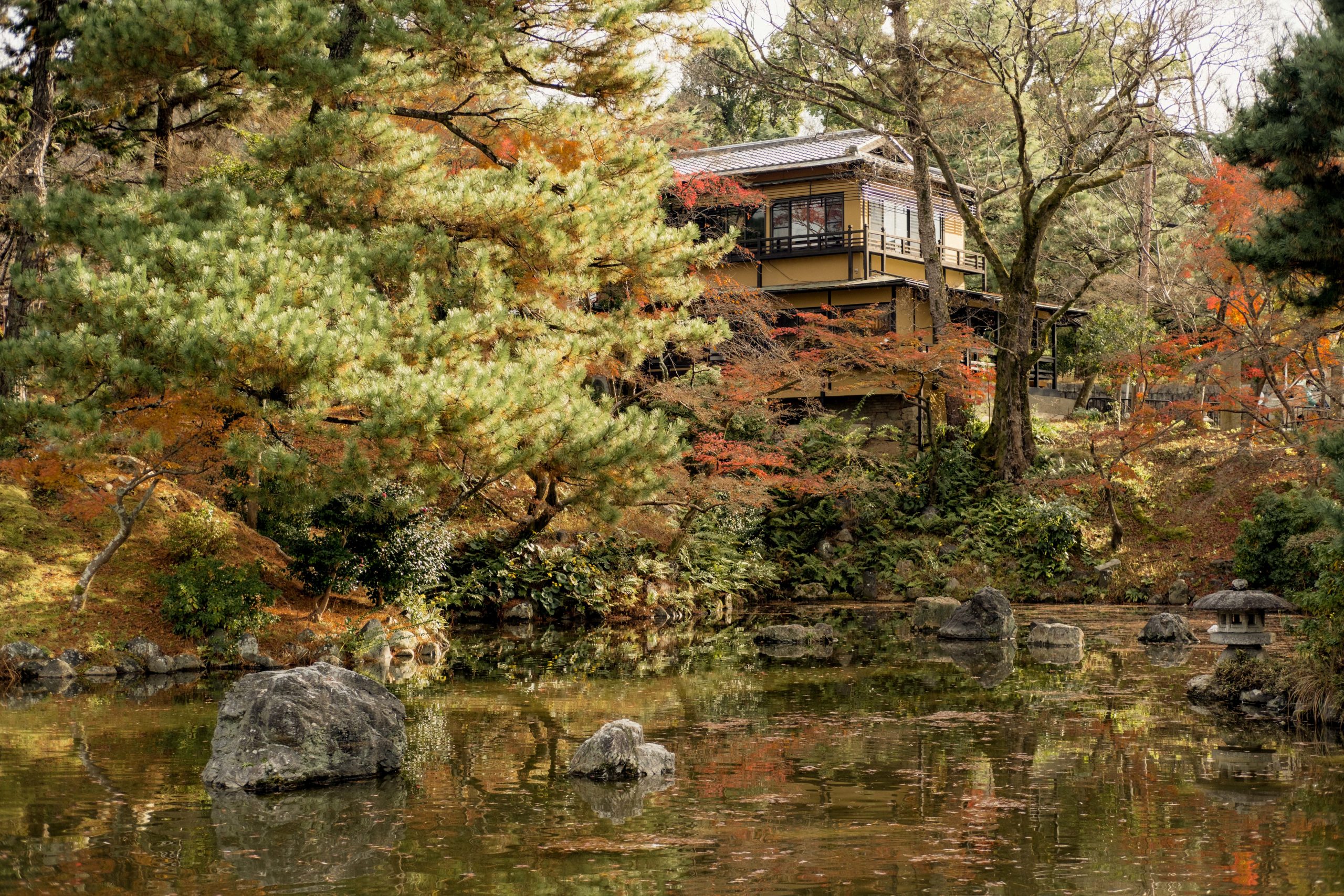
In the end, choosing between Kyoto and Osaka isn’t a matter of which city is objectively better, but rather which one better suits your personal travel preferences and budget. If you are interested in Japanese history, a lover of traditional culture, or a gourmet who delights in the refinement of kaiseki cuisine, you’ll find Kyoto an enchanting destination. It’s a city where you can really immerse yourself in stunning temples, serene gardens, and time-honoured customs. However, if you’re a foodie with a penchant for street food, an avid shopper, or someone who loves the bustle and vibrancy of city life, Osaka will win your heart. Known for its down-to-earth charm, affordability, and lively nightlife, it offers a more modern and cosmopolitan experience.
Don’t forget, the cities are just a 30-minute train ride away from each other, allowing you the flexibility to explore both without having to choose one over the other. In fact, the best approach could be to experience the splendid mix of traditional and contemporary Japan that these two cities collectively offer.
Frequently Asked Questions
Is it better to go to Kyoto or Osaka first?
You might want to kick off your trip in Kyoto, and here’s why. Kyoto is like an open-air museum, with tons of cool places to check out and traditions that go back centuries. You can wander around ancient temples or maybe try out a traditional tea ceremony. It’s a deep-dive into Japan’s past and a sure way to make your trip unforgettable right from the start.
Then, after soaking up all of Kyoto’s old-world charm, you can hop over to Osaka. This city is all about bright lights, big energy, and amazing street food. It’s the perfect switch-up from Kyoto’s calm elegance. So, it’s like opening a present, you start with the beautiful, timeless wrap that’s Kyoto, and then dive into the exciting surprise inside, that’s Osaka.
Is it better to go to Osaka or Tokyo?
If you’re picking between Osaka and Tokyo for your first Japan trip, Tokyo’s the way to go. It’s this massive, bustling city that’s so big, you’ll feel like each neighborhood is its own mini city. Tokyo is a blend of old and new, where peaceful temples and parks sit side-by-side with skyscrapers and busy shopping streets.
Each of Tokyo’s neighborhoods has its own vibe, from Shibuya’s trendy fashion scene to Akihabara’s anime paradise, from Ginza’s fancy shopping district to Asakusa’s historic charm with its iconic Senso-ji temple. You get to see all sides of Japan in just one city!
And the food? Oh, the food! Tokyo has the most Michelin-starred restaurants in the world. So whether you’re into sushi or ramen, want to check out the street food or visit a themed café, Tokyo’s got you covered.
Plus, Tokyo’s public transport is super efficient, making it easy to take day trips to places like Nikko, Hakone, or even Mt. Fuji.
Osaka’s got its own cool vibe and is definitely worth checking out, but Tokyo just offers so many more experiences. It’s a must-visit on your Japan trip.
Is it worth staying in Kyoto?
Absolutely, staying in Kyoto is definitely worth it. What makes it special is the variety of accommodations you can find. You’re not just limited to your typical hotels or hostels. Kyoto offers a wide range of unique accommodations. You can choose to stay in a traditional ryokan with zen gardens inside, or even rent a machiya, which are beautifully preserved wooden townhouses.
Is Osaka smaller than Kyoto?
Osaka city has an area of approximately 223 square kilometers, while Kyoto city covers around 827.83 square kilometres. However, the population of Osaka is significantly larger than Kyoto, making it more densely populated and giving it the feel of a much larger city.
There are 2.5 million people living in Osaka vs 1.5 million people living in Kyoto. Osaka receives just 12 million tourists a year while Kyoto welcomes over 85 million tourists every year.

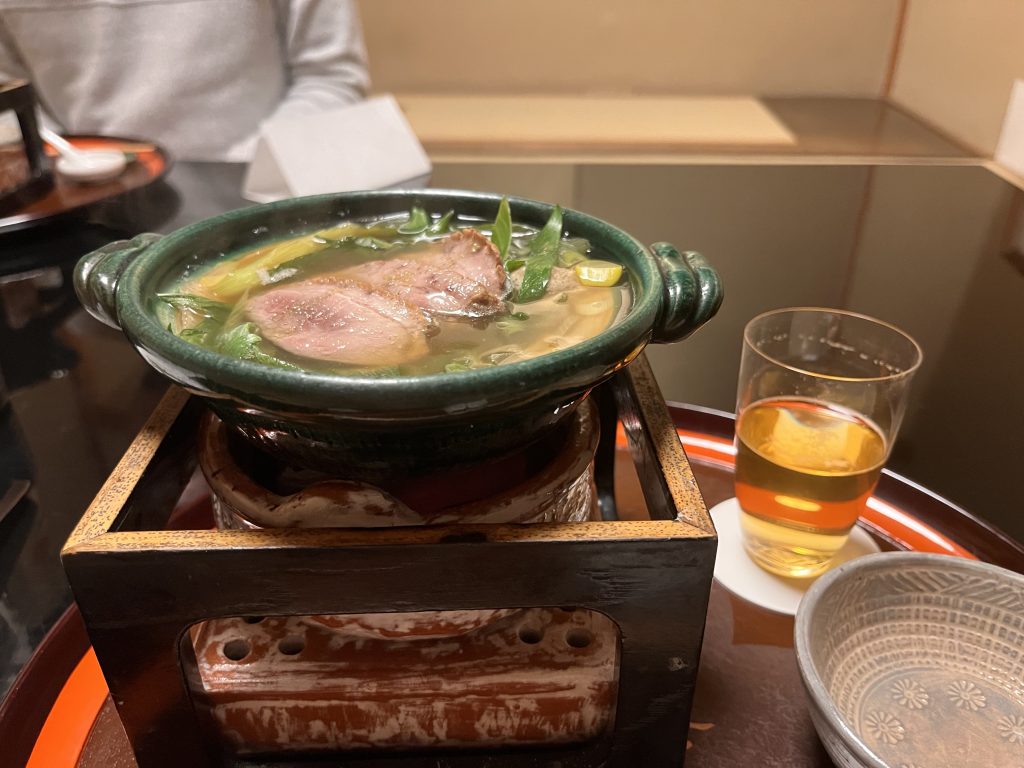
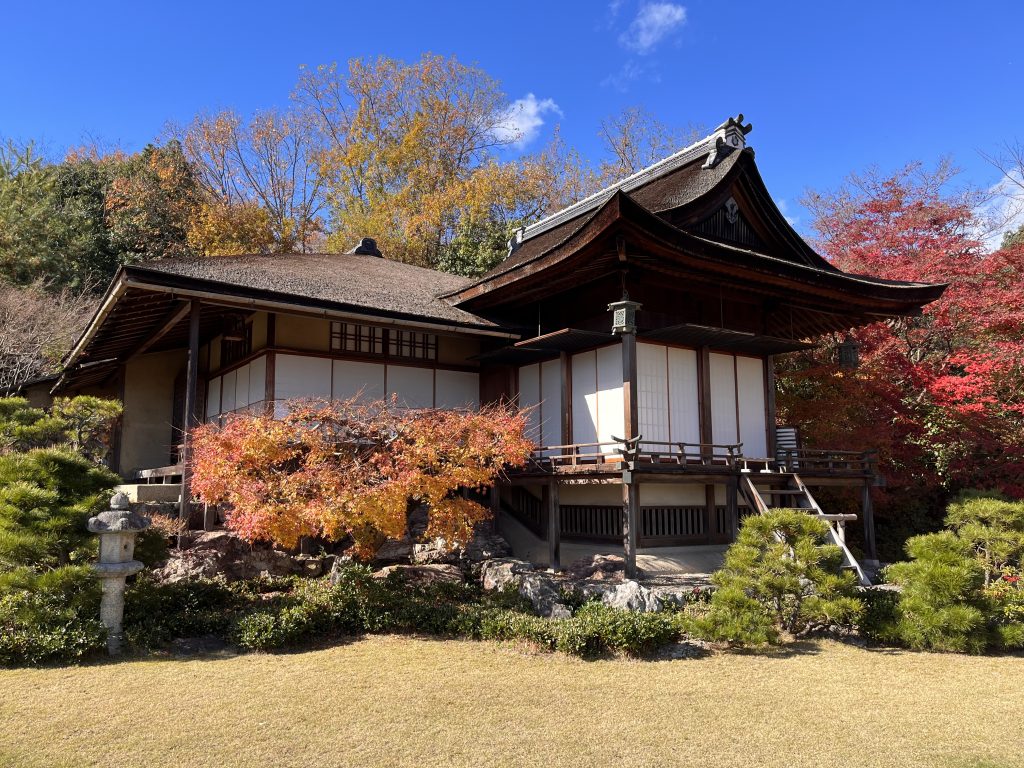
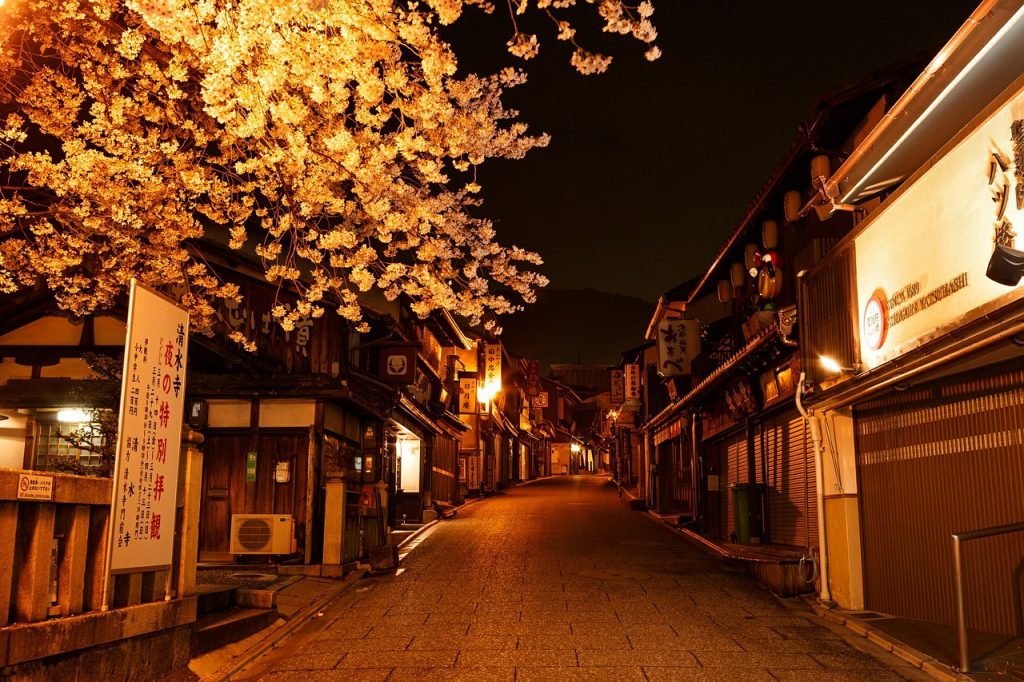
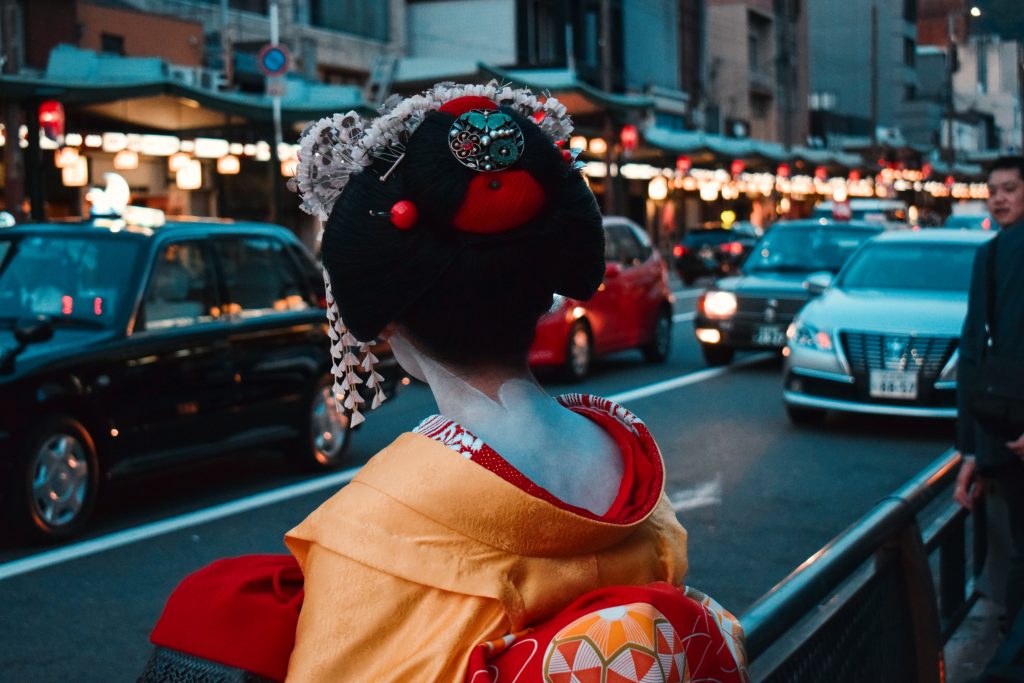
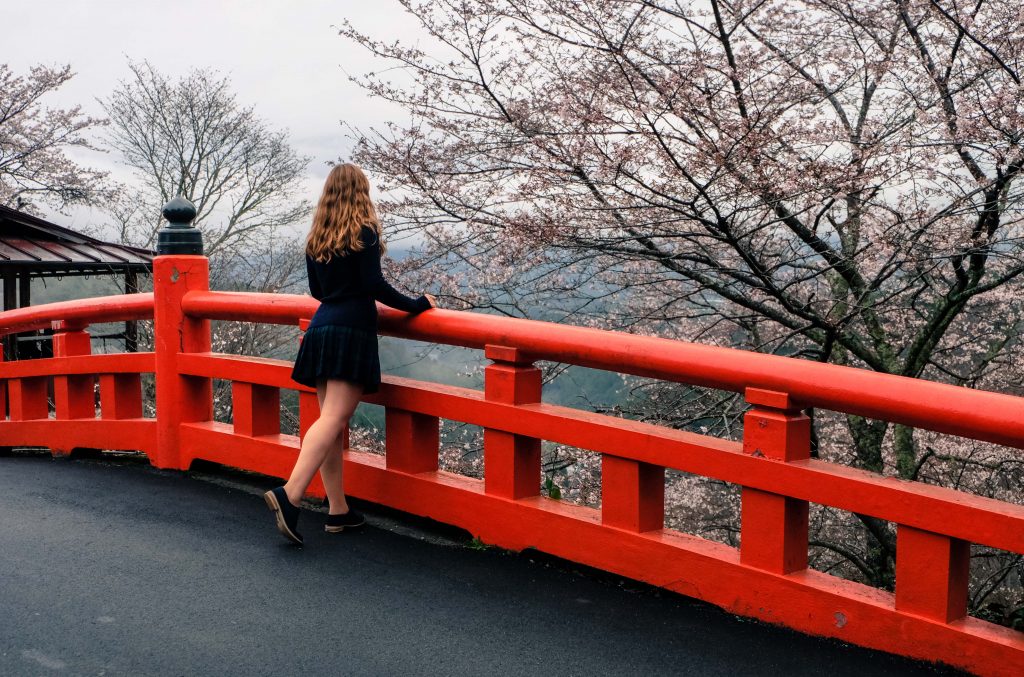
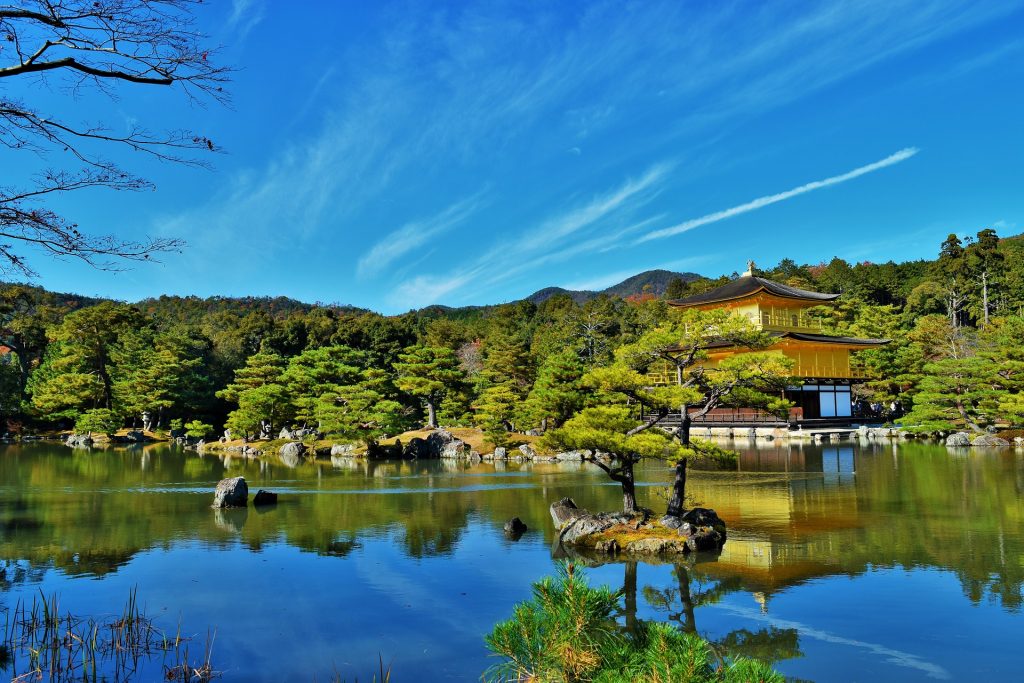


Leave a Reply